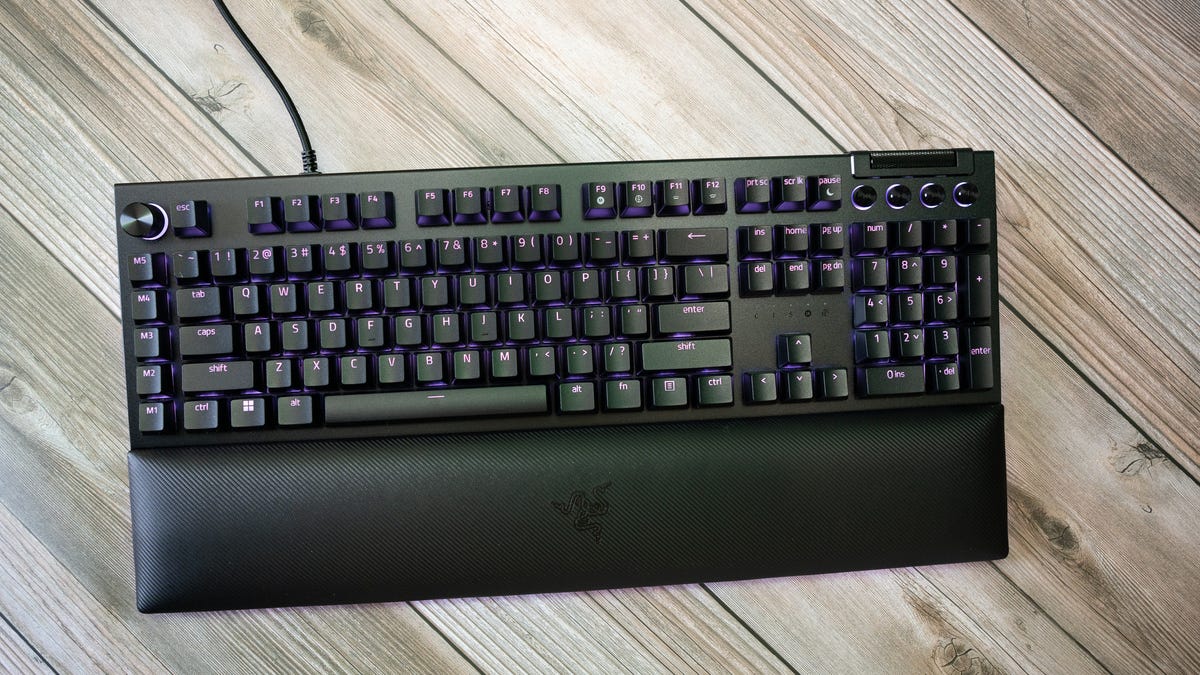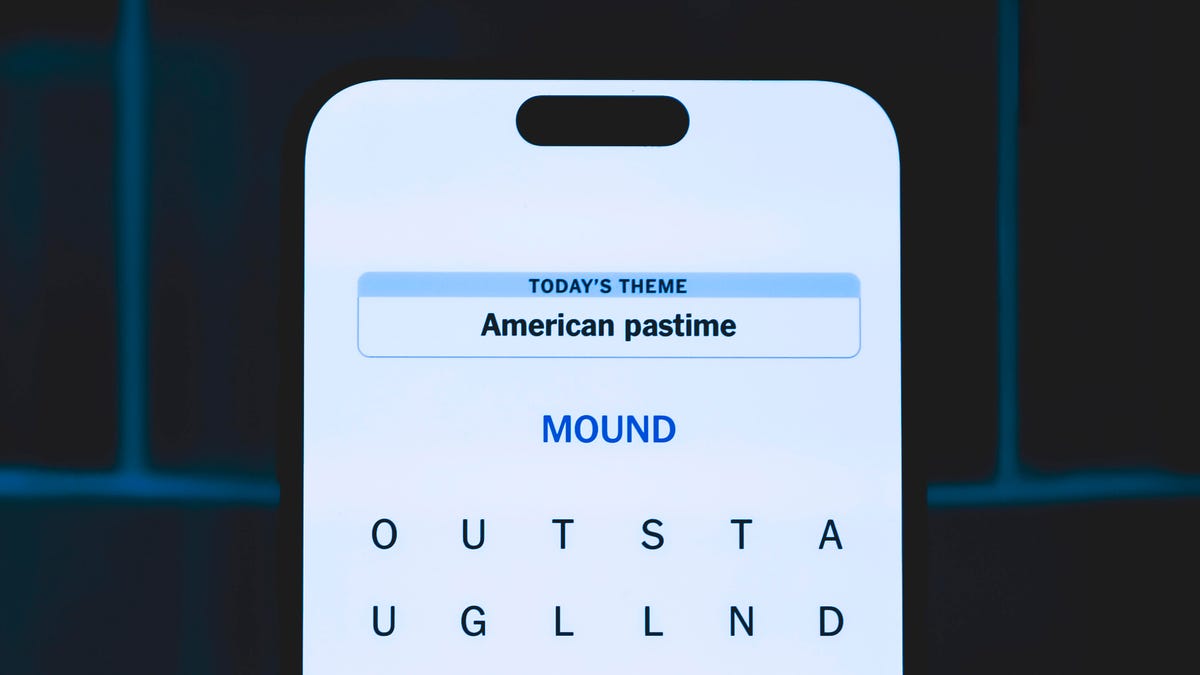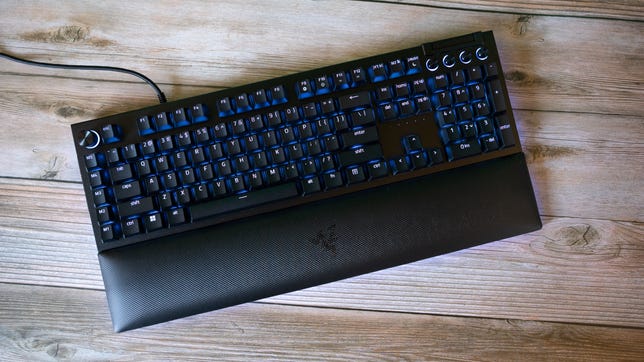Technologies
Razer BlackWidow V4 Pro Review: More Control and a Warm Underglow
Razer’s latest iteration of its function-rules gaming keyboard atones for some sins of the past and adds some new tricks.

Razer’s customizing-comes-first mechanical gaming keyboard line, BlackWidow, hits its fourth generation with the BlackWidow V4 Pro, a $230 ( 230, AU$400) full-size model with some notable improvements over its predecessor. These improvements include expanded lighting, more programmable controls, USB passthrough and an improved wrist rest design. These are all notable updates, but while I welcome all the changes in spirit, I’m not thrilled with the execution in a few cases.
Nothing has changed in its fundamental keyboard aspects, with the exception of a boost of the maximum polling rate to 8,000Hz, something I’m not sure you really need here. The switches and keycaps remain the same: You have a choice of the latest generation of Razer’s tactile Green or linear Yellow switches and Razer’s durable DoubleShot ABS keycaps.
Like
- Good, durable switches
- Expanded lighting zones
- More programmable controls
- Vastly improved magnetically attachable wrist rest
- Added USB passthrough
Don’t Like
- Buttons on left side are really easy to hit accidentally
- Multicontroller roller is too low relative to the height of the keys
There are a lot more lighting zones thanks to the addition of underglow strips on the left and right, plus a front strip on the wrist rest, five new backlit macro keys down the left side and a new programmable control dial in the upper left corner.
Razer says it’s added lenses to the individual backlight LEDs, which does seem to improve the focus in particular directions. I also think it’s made a difference in the number of perceptible brightness levels — if you need that level of granularity. I wish you could take advantage of that by controlling the brightness levels for individual or groups of keys the way you can control colors: That way the keys you need most frequently could be brighter as well as a different color, but not completely dark.
The new control dial allows you to map zooming, scrolling and other customization to your profiles. For example, the mappings default to zoom, keyboard brightness, task switching and track jogging. That’s becoming a more common feature these days, and it’s a useful one that extends beyond gaming. The physical control is fine, if a bit hemmed in. The downside is there are no presets beyond the basics — usually these controls come with sets — which means it requires a lot of time-intensive setup for a control you may end up not using.
There are also three new switches on the left side. I love the idea, but not so much the execution. I constantly make microadjustments to the location of keyboards — a nervous tic when I’m not actively typing — and so I end up hitting them a lot. It doesn’t help that I’m also adjusting to avoiding the left-side macro keys when reaching for alt-tab, where my compensation means my ring and pinky fingers naturally fall on those switches. And they’re too easy to activate, which may probably be a more broadly applicable issue.
These aren’t really complaints, since it’s certainly not the first keyboard to put the macro keys down the left side, but if you’re used to other layouts your muscle memory might need some retraining.
Then there’s the redesigned multicontroller, the roller bar with a bank of five, tall, round buttons above the number pad. It’s similar to the design on other keyboards, but the location and elevation don’t work, at least for my hands. The keys are so tall, relative to it, that it’s awkward to use. And remapping the control dial to do the same things, like adjust audio volume, isn’t quite as convenient, since you have to press it to cycle through the different mappings.
Like a lot of the programmability, you have to be running Razer’s Synapse utility for your customizations to work; you can’t save a lot of them to the internal keyboard memory. On the other hand, when you cycle through the mappings for the control dial there’s a popup telling you what the setting is and what the rotation does. There’s also a backlight color attached to each mapping but it’s not persistent, so you don’t know which setting the dial is currently mapped to with a glance.
The USB passthrough is a nice-to-have, and the new wrist rest is a lot more comfortable than the old one, plus it now attaches — pretty strongly — to the keyboard. If you’re sensitive to textures in a «I wear my shirts inside out because the seams make me crazy» kind of way, the bumpy faux leather may bother you, though.
It’s still big and heavy, but solidity in a keyboard isn’t something to complain about. Razer has upped the switch rating to 100 million keypresses, but they’re the same switches as before — they’ve just been tested more. I don’t put a lot of stock in durability ratings, but it’s nice to know that pounding on the keys won’t kill them any faster than it used to.
I’ve been using optomechanical switches for so long — and, more recently, linear ones — that going back to the feel of the tactile mechanicals has required some adjustment. But it’s nice to know that my fingers won’t accidentally trigger strokes if I rest them on the keys. That’s one of the perks that I miss with other types of switches.
For games where fast keyboard combos you can program are more important than single-key quick responsiveness, the BlackWidow V4 Pro makes a lot of sense. But unless you’re on board with how all the controls work, $230 might feel too expensive for your needs.
Technologies
Today’s NYT Strands Hints, Answers and Help for Nov. 28 #635
Here are hints and answers for the NYT Strands puzzle for Nov. 28, No. 635.

Looking for the most recent Strands answer? Click here for our daily Strands hints, as well as our daily answers and hints for The New York Times Mini Crossword, Wordle, Connections and Connections: Sports Edition puzzles.
Today’s NYT Strands puzzle is pretty tricky. If you’re not familiar with certain superstitious beliefs, you might not find all the answers. And some of the answers are difficult to unscramble, so if you need hints and answers, read on.
I go into depth about the rules for Strands in this story.
If you’re looking for today’s Wordle, Connections and Mini Crossword answers, you can visit CNET’s NYT puzzle hints page.
Read more: NYT Connections Turns 1: These Are the 5 Toughest Puzzles So Far
Hint for today’s Strands puzzle
Today’s Strands theme is: If all else fails…
If that doesn’t help you, here’s a clue: Don’t tell, it won’t come true.
Clue words to unlock in-game hints
Your goal is to find hidden words that fit the puzzle’s theme. If you’re stuck, find any words you can. Every time you find three words of four letters or more, Strands will reveal one of the theme words. These are the words I used to get those hints but any words of four or more letters that you find will work:
- GLUB, RATS, TARN, DALE, FONT, FOUNT, LASH
Answers for today’s Strands puzzle
These are the answers that tie into the theme. The goal of the puzzle is to find them all, including the spangram, a theme word that reaches from one side of the puzzle to the other. When you have all of them (I originally thought there were always eight but learned that the number can vary), every letter on the board will be used. Here are the nonspangram answers:
- DANDELION, STAR, COIN, FOUNTAIN, LADYBUG, EYELASH
Today’s Strands spangram
Today’s Strands spangram is MAKEAWISH. To find it, start with the M that’s three letters down on the far right, and wind backwards.
Technologies
Today’s NYT Connections Hints, Answers and Help for Nov. 28, #901
Here are some hints and the answers for the NYT Connections puzzle for Nov. 28, #901.

Looking for the most recent Connections answers? Click here for today’s Connections hints, as well as our daily answers and hints for The New York Times Mini Crossword, Wordle, Connections: Sports Edition and Strands puzzles.
Today’s NYT Connections puzzle is kind of tough. If you need help sorting the answers into groups, you’re in the right place. Read on for clues and today’s Connections answers.
The Times now has a Connections Bot, like the one for Wordle. Go there after you play to receive a numeric score and to have the program analyze your answers. Players who are registered with the Times Games section can now nerd out by following their progress, including the number of puzzles completed, win rate, number of times they nabbed a perfect score and their win streak.
Read more: Hints, Tips and Strategies to Help You Win at NYT Connections Every Time
Hints for today’s Connections groups
Here are four hints for the groupings in today’s Connections puzzle, ranked from the easiest yellow group to the tough (and sometimes bizarre) purple group.
Yellow group hint: Appropriate.
Green group hint: I win!
Blue group hint: Musical instrument.
Purple group hint: Time to talk.
Answers for today’s Connections groups
Yellow group: Fitting.
Green group: Achieve victory over.
Blue group: Parts of an electric guitar.
Purple group: Phonetic elements of speech.
Read more: Wordle Cheat Sheet: Here Are the Most Popular Letters Used in English Words
What are today’s Connections answers?
The yellow words in today’s Connections
The theme is fitting. The four answers are fair, just, proper and right.
The green words in today’s Connections
The theme is achieve victory over. The four answers are beat, best, take and worst.
The blue words in today’s Connections
The theme is parts of an electric guitar. The four answers are fret, peg, pickup and string.
The purple words in today’s Connections
The theme is phonetic elements of speech. The four answers are intonation, loudness, rhythm and stress.
Technologies
Anker’s New MagSafe Car Mount Keeps Your Phone Cool While Charging, and It’s 30% Off for Black Friday
Get wired-like charging speeds and MagSafe compatibility with Anker’s wireless car charging bundle for $62.99.
Black Friday is the best time of the year to upgrade the little essentials that make your everyday tech life more pleasant. I’ve found the perfect deal to amp up the phone charging setup in your car. This Anker MagSafe wireless car charging bundle is 30% off for the holidays, and it gives your iPhone a fast and steady way to power up while you navigate. It delivers up to 25-watt wireless charging speeds and with onboard active cooling, your phone stays comfortable to the touch.
Get it now for $62.99 verses the list price of $89.99.
What sets this charger apart is that its performance and cooling tech is built into a surprisingly compact package. The stand uses an ultra-strong Qi2 magnetic lock to keep your phone secure through bumps and turns. You can even tilt the mount and switch between portrait and landscape modes for navigation without blocking the view. The bundle has everything you need to get started including a 60-watt dual-USB-C charger, an adequately long USB-C cable, and cable organizers for a clean setup. Anker also includes a two-year warranty for peace of mind.
If you are getting your car prepped up for driving to a holiday vacation or just need a faster charging mount for your daily commute, this deal makes a lot of sense. CNET’s experts are also tracking more Black Friday and Cyber Monday picks across Apple products, headphones, and more, so you can score more savings before the sales season wraps up.
MOBILE DEALS OF THE WEEK
-
$749 (save $250)
-
$475 (save $175)
-
$499 (save $300)
-
$900 (save $400)
Why this deal matters
A high quality charger is a great addition to any car to speedily top up your phone on the go. You will especially want to look out for options from a top-tier brand like Anker for its fast charging speeds and reliability. This Black Friday deal is an excellent opportunity to save big on a staple car accessory. With holiday shopping heating up and tech accessories being one of the most popular categories, we expect the deal to sell out quick. So don’t wait too long before jumping on it.
Don’t miss any of our unbiased tech content and lab-based reviews. Add CNET as a preferred Google source.
Join Our Daily Deals Text Group!
Get hand-picked deals from CNET shopping experts straight to your phone.
By signing up, you confirm you are 16+ and agree to receive recurring marketing messages at the phone number provided. Consent is not a condition of purchase. Reply STOP to unsubscribe. Msg & data rates may apply. View our Privacy Policy and Terms of Use.
-

 Technologies3 года ago
Technologies3 года agoTech Companies Need to Be Held Accountable for Security, Experts Say
-

 Technologies3 года ago
Technologies3 года agoBest Handheld Game Console in 2023
-

 Technologies3 года ago
Technologies3 года agoTighten Up Your VR Game With the Best Head Straps for Quest 2
-

 Technologies4 года ago
Technologies4 года agoBlack Friday 2021: The best deals on TVs, headphones, kitchenware, and more
-

 Technologies4 года ago
Technologies4 года agoVerum, Wickr and Threema: next generation secured messengers
-

 Technologies4 года ago
Technologies4 года agoGoogle to require vaccinations as Silicon Valley rethinks return-to-office policies
-

 Technologies4 года ago
Technologies4 года agoOlivia Harlan Dekker for Verum Messenger
-

 Technologies4 года ago
Technologies4 года agoiPhone 13 event: How to watch Apple’s big announcement tomorrow

